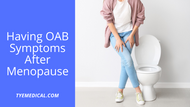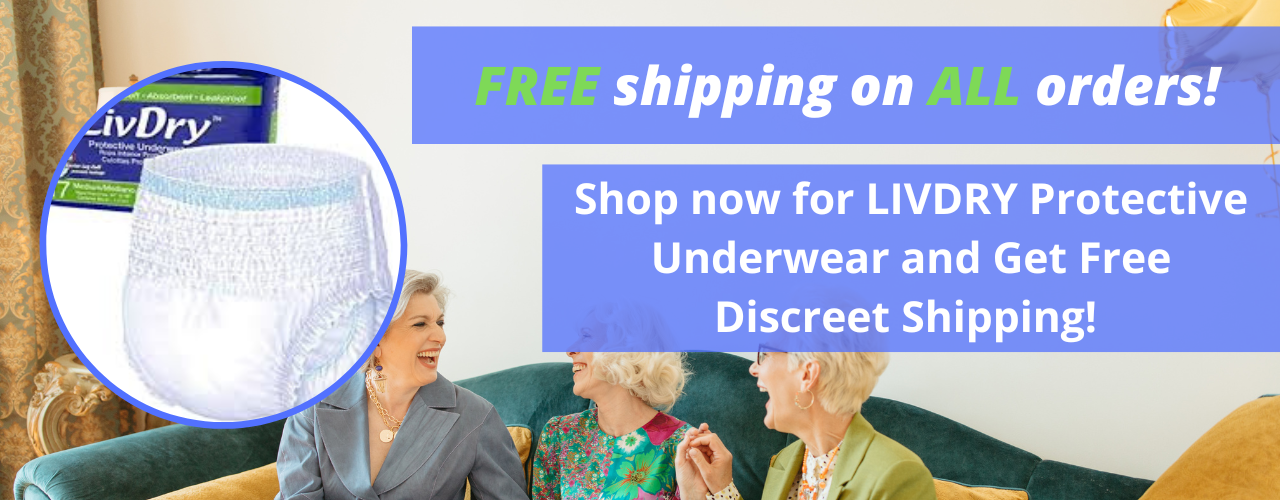Having Overactive Bladder Symptoms After Menopause?
Written by TYE Medical on May 9th 2023
Feeling that sudden urge to rush to the bathroom more often now that you’re older? You’re not the only one. Postmenopausal women ages 45-54 are notably more prone to overactive bladder (OAB). If you have OAB, you’ll notice increased urgency and frequency, and it’s often accompanied by incontinence. As you get older, urinary incontinence becomes more common and symptoms worsen. You may find that after menopause, you’re battling bladder problems on two fronts. So, here is what you need to know about overactive bladder postmenopause.
What Is Menopause?
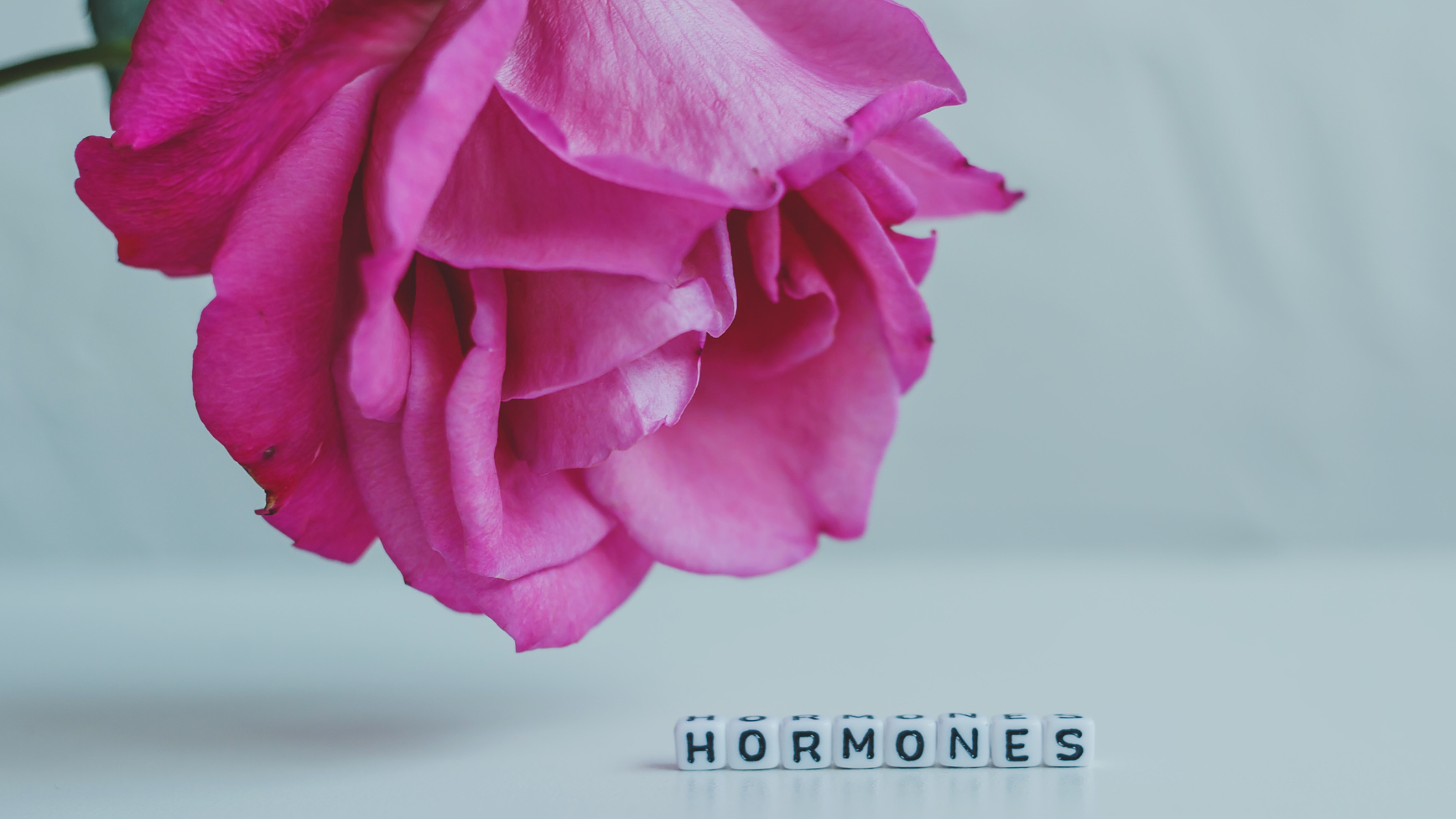
We often think of menopause as the time of hormonal transition during midlife, but that’s not the case. The transitional phases are more accurately known as perimenopause and postmenopause. Menopause, when precisely defined, is the time of your last menstrual period. Once you have gone without a period for 12 straight months, a doctor can confirm that your last period was menopause. You officially enter the stage of postmenopause.
The average age of menopause is 51, so you’re most likely to reach it by your later forties or early fifties. You may notice these symptoms as you reach menopause:
- a change in your regular period
- hot flashes, or suddenly feeling of heat in your upper body
- trouble sleeping
- changing sexual desires
- mood changes
- vaginal changes
- bladder control issues
If you begin experiencing bladder control problems, it can also increase your risk of OAB.
Overactive Bladder Symptoms
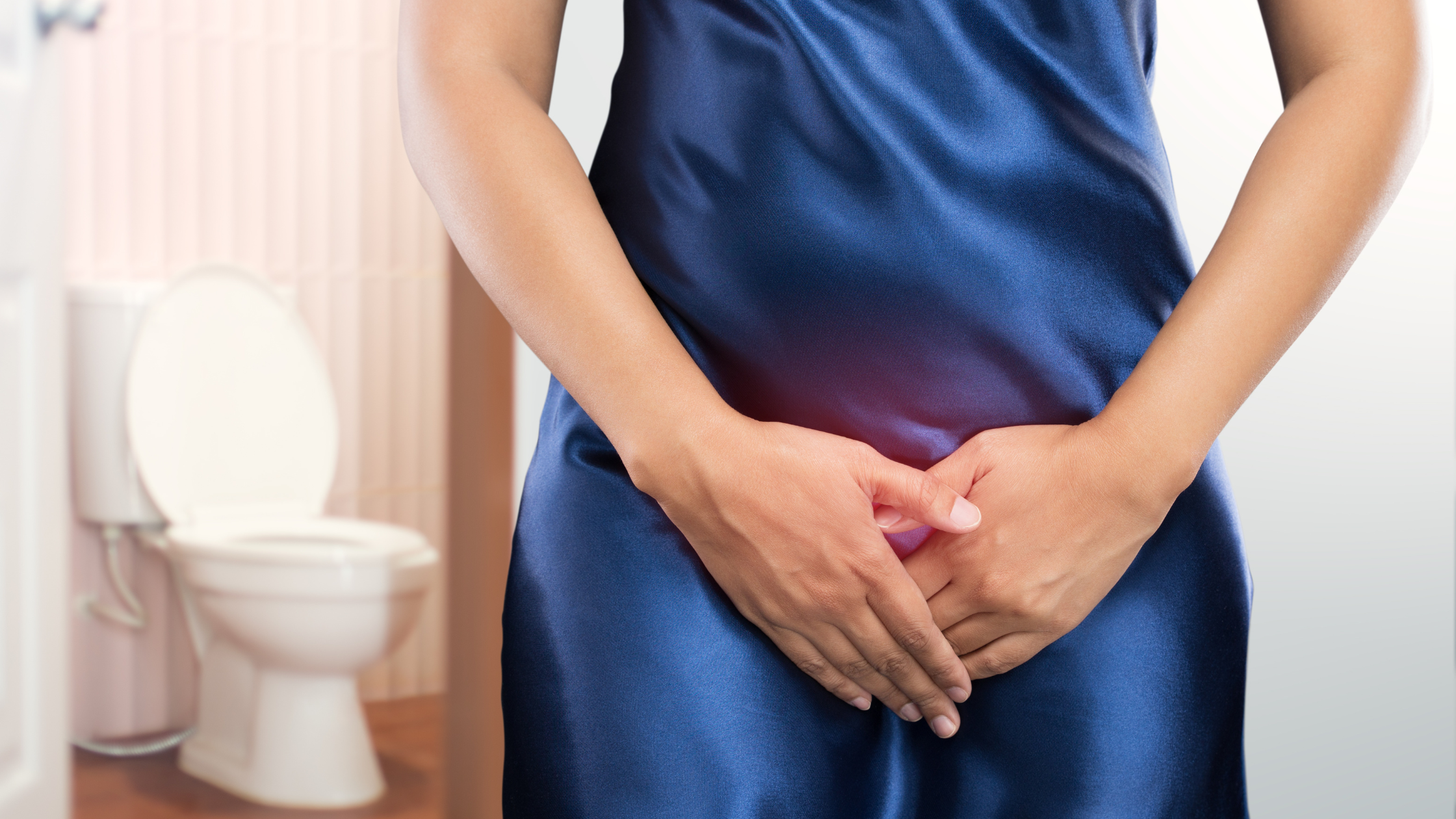
If you’re approaching menopause and noticing bladder symptoms, chances are you're experiencing some degree of OAB. Here are the most common symptoms:
- urinating more frequently
- having sudden urges to urinate
- leaking urine before getting to the bathroom
- urinating two or more times at night
In older adults, OAB can cause other complications such as making you more likely to fall, decreasing your sleep quality, and reducing your overall well-being. If you notice these bladder symptoms, check with your doctor to get an official diagnosis and treatment options.
Dropping Estrogen Causes OAB
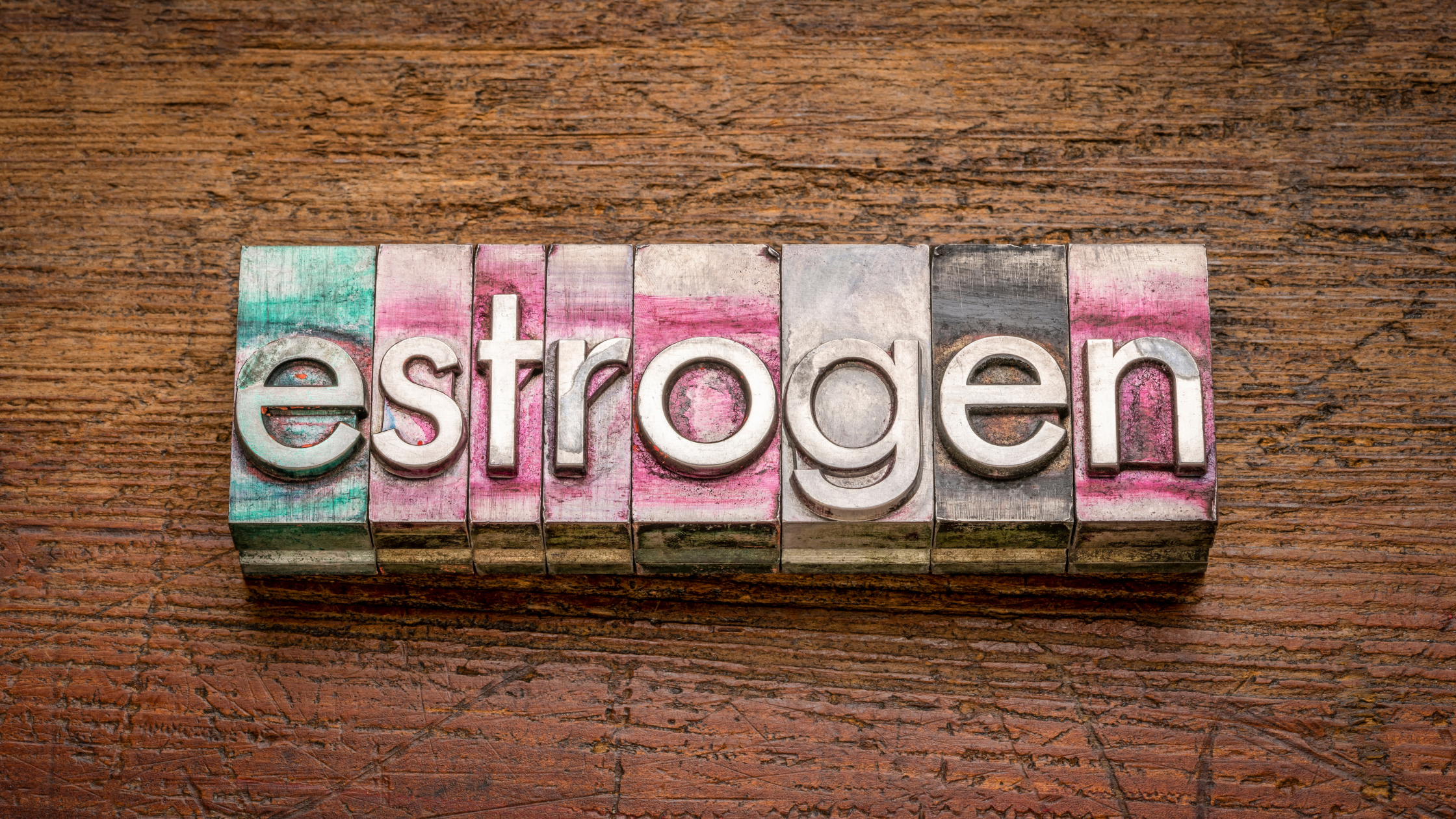
Your ovaries produce most of your primary female sex hormone, estrogen. Estrogen not only affects your reproductive organs but also other tissues in your body, including your pelvic floor muscles and urinary tract.
When your body produces a steady flow of estrogen before perimenopause, your pelvic floor muscles and bladder tissues have strong and flexible support. This allows you to maintain urinary health and avoid OAB or incontinence symptoms. But during perimenopause and menopause, your estrogen levels plummet, weakening your pelvic floor muscles. This means that your bladder has less support and is under increased pressure. Additionally, the sphincter muscles that hold back urine may also be weakened and allow urine to pass involuntarily.
These changes can cause overactive bladder symptoms and even lead to stress or urge incontinence.
Other Causes of OAB
While estrogen is a common trigger for overactive bladder, other causes can contribute to sudden urges to urinate and the need to go more frequently. If you’ve given birth vaginally you’re more likely to develop overactive bladder symptoms with age because it strains and weakens pelvic floor muscles. Pregnancy and childbirth can also strain ligaments that support your bladder, increasing symptoms.
You might also have OAB or incontinence symptoms due to nerve damage whether from trauma or disease. When nerves to your bladder are damaged, signals between your bladder and brain can be mixed or confused, causing symptoms.
How to Manage OAB Post Menopause
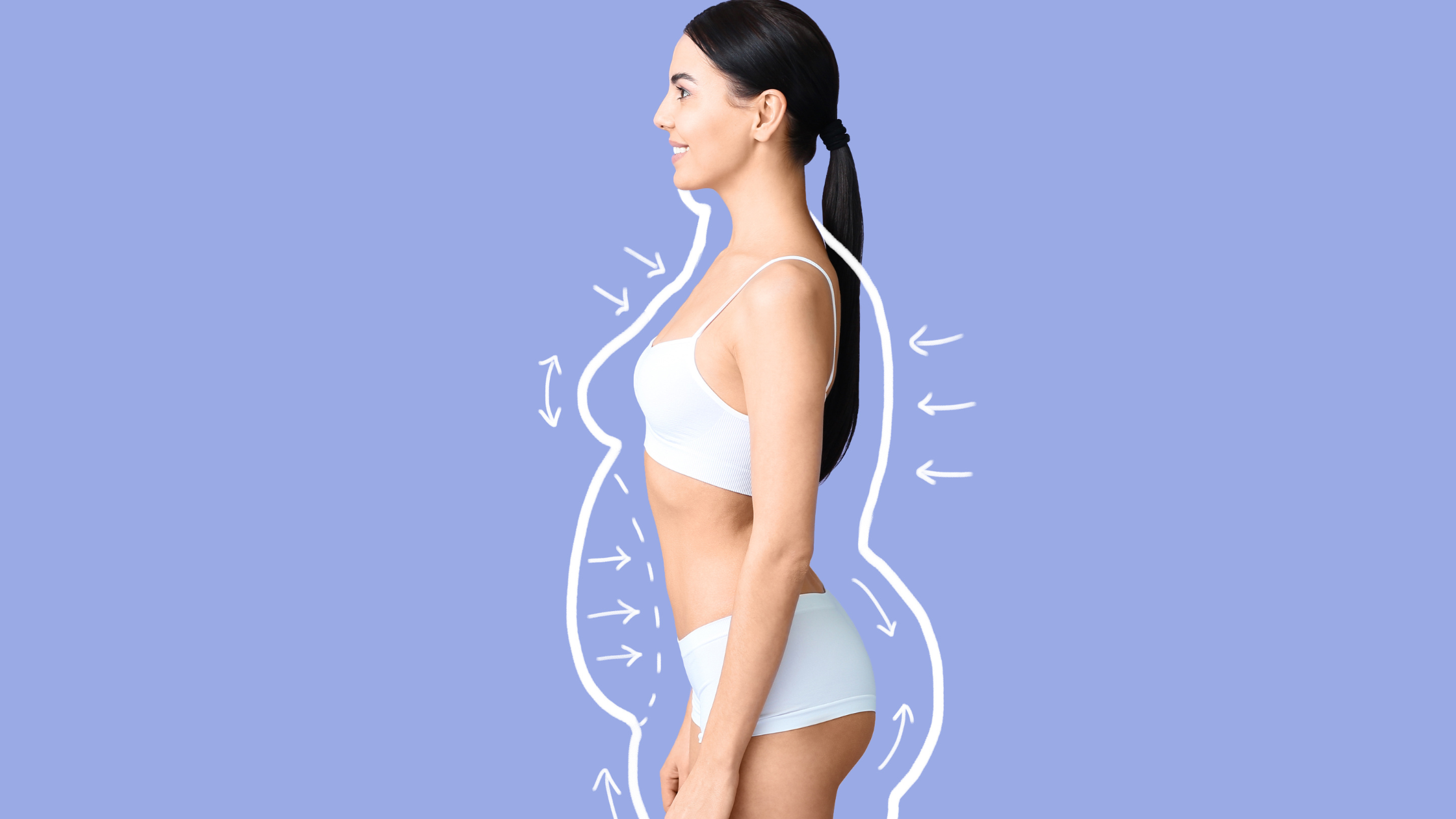
If you have OAB, you feel like you need to go to the bathroom–a lot. This is not only inconvenient but also uncomfortable. And since over a quarter of adult women have at least occasional incontinence symptoms, it isn’t surprising if you leak urine when you feel the urge to go.
But it’s possible to manage your OAB and reduce the risk of leaks. Here’s are some simple, non-medical ways to do this:
Kegel exercises: Also called pelvic floor exercises, this approach helps you strengthen your weakened pelvic floor through a series of prolonged contractions of pelvic muscles. As your pelvic floor becomes stronger, OAB and incontinence symptoms may decrease. It may take 6-8 weeks to notice a change in your symptoms.
Bladder retraining: This involves gradually increasing your ability to hold urine. You keep a record of your bathroom trips and increase your time between trips a little every day until you’ve strengthened and retrained your bladder. This not only helps some people with OAB symptoms but with incontinence as well.
Double voiding: Sometimes, you have symptoms because your bladder isn’t empty. You can avoid this problem if you wait a few minutes after urinating and then try to go again. During this second attempt, your bladder may be relaxed enough to completely empty.
Maintaining a healthy weight: If you carry extra weight in your abdomen, it can put pressure on your bladder, which causes OAB symptoms and bladder leaks. When you achieve and maintain a healthy weight these symptoms often disappear.
Incontinence products: Wearing incontinence pads or underwear doesn’t correct your bladder problem, but it can help you manage the most unpleasant of symptoms–leaks.
Things to Remember
Overactive bladder and bladder leaks often occur together. If you are in perimenopause or postmenopause, you may begin experiencing bladder symptoms due to the drastic drops in estrogen. These symptoms may be strongest after menopause.
But you can manage symptoms through non-medical means like Kegel exercises and losing extra weight. Estrogen patches and creams haven’t been proven to relieve OAB symptoms in postmenopausal women. But you can talk to your doctor if you’re interested in trying these treatments to relieve bladder symptoms.

